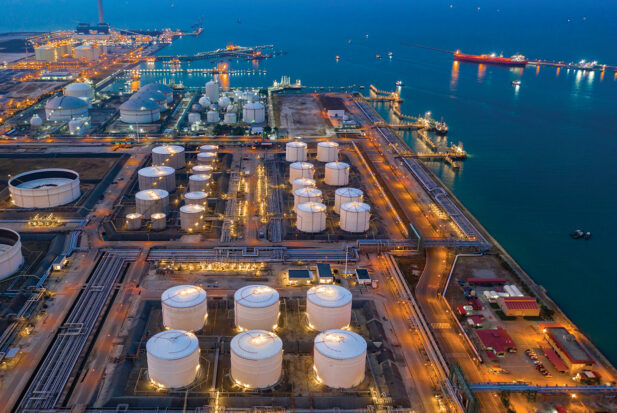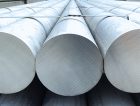
As western markets rush to secure long-term supply of energy and critical metals, export credit agencies (ECAs) are breaking new ground. A string of bumper ECA-backed deals in Europe’s commodities sector continue to make headlines, and around the world, the driving forces behind those deals show no signs of abating. Is this trend here to stay? John Basquill reports.
Commodities trading and export finance have historically operated within very different worlds. ECAs are best known for supporting domestic exporters, providing a layer of security to sales of manufactured, industrial or infrastructure-related goods that require heavy capital expenditure but deliver long-term returns.
As recently as 2022, more than a third of all turnover in the export credit sector was from trade in manufactured products, capital goods and electronics, according to a September 2023 report from the Berne Union.
These transactions generated nearly US$900bn in turnover last year, says the association, whose members include ECAs and private insurers.
Commodities trading, meanwhile, is characterised by short-term transactions and minimal processing of goods. The asset conversion cycle is short, and goods can change hands repeatedly and rapidly.
Crucially, there is a major difference in where the perceived risks lie in commodity trading versus export finance. Commodity finance veteran John MacNamara, chief executive of trade advisory firm Carshalton Commodities, notes that flows “traditionally came from emerging markets and went into developed markets, so the payment risk was on the end of the supply chain that had money”.
“People worried about the performance risk on the emerging market producers, and financiers in particular worried about the credit risk on the thinly capitalised traders,” he tells GTR. Conversely, for export finance transactions, exporters would seek long-term cover for risk on the emerging market side, particularly non-payment.
But these dynamics are changing. In December last year, Trafigura sealed a mammoth US$3bn four-year loan, backed by German ECA Euler Hermes Aktiengesellschaft, to support the delivery of gas into Europe. The deal – one of several ECA-backed transactions involving the trading behemoth in the last 12 months – sparked interest across the industry.
As Jean-François Lambert, founder and managing partner of Lambert Commodities, said at the time: “Would you have imagined in your wildest dreams, a state like Germany guaranteeing Trafigura’s signature for these kinds of amounts, and this kind of duration?”
Such deals represent a dramatic change in the trade landscape. The pandemic, followed by Russia’s invasion of Ukraine, resulted in upheaval to commodity flows as governments hurried to secure energy supplies amid soaring prices.
At the same time, states are in a race to lock in access to critical minerals and rare earth metals, driven by growing demand for electrical goods, an acceleration of the energy transition, and a keenness to reduce reliance on China.
Energy security
The main motivation for European ECAs to engage in energy-related commodities deals has been to ensure security of supply in a turbulent and unpredictable geopolitical context.
Prior to Russia’s invasion of Ukraine, the EU sourced around half of its natural gas from Russia. Following the introduction of sanctions and a scaling back of pipeline supply to the bloc, buyers found themselves in a frantic pursuit of alternative sourcing markets, at a time when gas prices were skyrocketing.
Results included record imports of liquefied natural gas (LNG), the bulk of which were from the US, as well as a steep rise in pipeline gas imports from Azerbaijan and, to a lesser extent, Norway.
This scramble to meet high demand in the face of abrupt supply constraints underscored the heightened significance of energy security for European governments.
Backing of the US$3bn Trafigura deal was under Euler Hermes’ untied loan guarantee programme, which provides cover for Germany’s supply security of raw materials. Trafigura’s head of gas and power trading, Richard Holtum, said at the time the company was “proud to be contributing to Europe’s energy security”.
In March this year, Trafigura announced another ECA-backed energy transaction. The Abu Dhabi Exports Office provided US$125mn of a US$135mn loan facility to support the trader’s purchases of refined fuels – as well as metals and minerals – from the United Arab Emirates. Again, the ECA’s executive committee chairman, Mohamed Saif Al Suwaidi, emphasised the strategic importance of such flows.
The German government has also struck a deal with state-owned QatarEnergy to supply 2 million tonnes of LNG per year starting in 2026, with a subsidiary of US trader ConocoPhillips acting as the buyer.
And in June, Italy’s Sace provided a guarantee for a €500mn multi-currency facility obtained by Mercuria – the trader’s first ECA-backed transaction – to support the supply of natural gas and LNG to the country. This was followed by Sace guaranteeing a €550mn facility from six lenders for Vitol, also to facilitate Italy’s gas imports.
This trend is newer to the European market than the Asia Pacific region, where ECAs have long backed domestic trading houses to secure commodities imports. Matthew Moodey, head of trade finance and lending for Asia Pacific at Deutsche Bank, points out that “mega LNG or gas deals with ECA backing have been a feature of the Asia Pacific region for 20-25 years”.
“A lot of that has been driven by Japan and Korea,” he tells GTR. “They don’t have the natural resources for their energy needs, so they provide long-term offtake contracts and engineering expertise into markets such as Australia, the US or the Middle East in order to secure supply of oil and gas.”
The pattern is changing in the Asia Pacific region too, however, as discussions emerge around supply of hydrogen as a cleaner alternative to fossil fuels.
“Now, there are discussions emerging around hydrogen,” Moodey says. “I expect what we’ll see is Japan and Korea having to sign offtake agreements for the supply of hydrogen to replace coal, for example in their coal-fired power stations, and blending hydrogen into these plants.
“To develop the supply of hydrogen in markets such as Australia, the US and the Middle East, we will likely require ECA involvement or other support, such as government subsidies, to fill the gaps that emerge, particularly between blue and green hydrogen.”
Critical metals
As with energy, the driving force behind ECA involvement in metals is to ensure supply chains remain resilient and predictable during a period of environmental and geopolitical uncertainty.
“ECA involvement in critical metals is likely to be driven by electric vehicle supply chains and semiconductors,” says Deutsche Bank’s Moodey.
“There are a number of different components that go into an electric vehicle battery – you need lithium, nickel, cobalt, manganese, graphite – and looking forward to where demand is likely to be in 2030 or 2035, you need to make sure your supply of those metals is secure now.”
Moodey adds that several metals, including copper, nickel and cobalt, are also going to face greater demand as electrification continues. In Australia, he notes, the government is anticipating spending hundreds of billions of dollars on transmission lines alone.
Again, the traditional sourcing markets for such materials are considered increasingly risky. As Moodey points out: “Another driver for ECA involvement is to facilitate diversification away from China for critical metals.
“The percentage of rare earth metals that are sourced from China is in the high 90s, and that could obviously be an issue for geopolitical reasons. If China decided to weaponise its dominance in rare earths and turn off the supply, that could shut down critical components to life in the western world.”
An April study published by the OECD reports that its member states are far more dependent on critical mineral imports from China than any other nation, yet export restrictions have increased more than five-fold over the last 10 years.
Again, Trafigura has been at the forefront of ECA-backed metals deals. In February, it agreed a US$500mn loan backed by Italy’s Sace to supply the country with crucial commodities, including non-ferrous metals.
The previous October, the company secured a five-year US$800mn loan to provide up to 500,000 tonnes of non-ferrous metals into Germany, again guaranteed under Euler Hermes’ untied loan programme.
And in countries rich in raw materials, there are growing opportunities on the export side. A report published in September by Australia’s government says it “can play a major role in helping facilitate [Southeast Asia’s] energy transition as a major global exporter of critical minerals and energy transition metals”.
“Critical minerals are fundamental to the global transition to net-zero emissions. Australia is a significant producer of critical minerals such as lithium, cobalt and rare earths, as well as energy transition metals including aluminium, nickel and copper,” it says.
“The potential revenue from critical minerals and energy transition metals in Southeast Asia to 2050 is significant.”
Here to stay?
In GTR’s latest commodities issue, published in the first quarter of this year, industry insiders suggested that ECA involvement in commodity finance transactions – from oil and gas to metals and minerals – is here to stay. Lambert of Lambert Commodities believes that is still the case.
“Commodity markets have been significantly dislocated for more than three years now, and developed countries with little or no domestic supply have been exposed to supply risk they were not anticipating,” he tells GTR.
The incentives on the trader side are compelling, Lambert notes.
“What would motivate more trading houses than a larger access to a financing pool? The dislocation fosters competition amid consuming countries, and ECA credit enhancement is the logical tool to attract their support,” he says.
Luka Lightfoot, a partner at Baker McKenzie with extensive experience advising on ECA-backed transactions, adds that having an ECA guarantee sitting behind the financing will generally lower the cost of funding for the trader.
“Some traders are very highly rated of course, but when you add on top of that a guarantee of, for example, an OECD sovereign, that certainly has an impact,” he tells GTR.
And there is little sign government interest in these transactions is likely to wane, says Lambert.
“If dislocations of the commodity market were temporary, then such competition for sourcing would abate soon. But they are not. The cogs of war are still turning, and the competition between China and the US is taking globalisation apart,” he says.
“The energy transition is gathering momentum, starving fossil fuels of investment when there are doubts about the immediate ability of alternative sources to compensate for the potential shortfall. And electric metals need new production and mining capabilities that are not on the radar.
“Commodity sourcing will top many government agendas for many years.”
Beyond the strategic importance of securing commodities imports, there are clear financial incentives for ECAs to be involved in such flows, including at the level of extraction and processing.
“When you look at these big projects, we’re talking about billions of dollars in capital expenditure, and major EPC contracts,” says Deutsche Bank’s Moodey.
“These are titanic shifts in supply chains that are happening and relatively quickly that sometimes require government support. The ECA would not only be assessing the mix of offtakers that will be active in that market; there is also the percentage of engineering and equipment from their home country that is going into the project.”
For its part, Trafigura says it remains in discussion with several agencies and banking partners about further support for such deals.
“Having recognised our role in providing a secure supply of commodities we’re now seen as a partner of choice by a number of ECAs,” says Christophe Salmon, chief financial officer at Trafigura.
“We’re now extending our relationships within our banks to their export finance desks who have not traditionally focused on commodities,” he tells GTR. “We’re in discussions with a number of ECAs for repeat agreements and with others who are interested in closing agreements for the first time, or who are interested to learn.”
Baker McKenzie’s Lightfoot says he expects to see a growing number of commodities transactions supported by ECAs, particularly given the growing role of untied facilities and non-traditional product offerings.
“It may not be as rapid a change as people may be thinking about, but ECAs’ appetite to be more creative around product development will lead to them playing a greater role in the energy transition, which in turn will result in financing critical minerals,” he tells GTR.
Carshalton Commodities’ MacNamara is more hesitant, however. Though several European banks sought to bring commodities and export finance teams together as early as the 2000s, he says staff often “had absolutely nothing in common”.
“To me as a commodity boy, the ECA brigade seemed to have the patience of Job to get their deals through what is essentially the civil service in the ECA, to make not very much money, and all appeared to enjoy watching paint dry,” he says.
At the same time, the commodities supercycle after the turn of the millennium meant commodity producers were able to turn to the bond markets for medium and longer-term financing options, while borrowers “had too many easier options” than ECA-backed financing in challenging markets.
“The real challenge to this idea of marrying ECA with commodity trade finance was that there simply weren’t enough of such deals to make it worthwhile living with the organisational pain,” MacNamara says.
Is the trend here to stay? “I’ll believe it when I see it,” he says. “I was impressed by the big German Euler Hermes import facility for Trafigura… but there is huge devil in the detail, and I’m sceptical that we will see a lot of such arrangements.”











